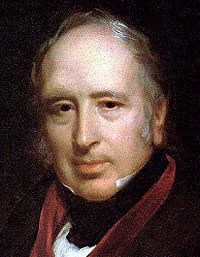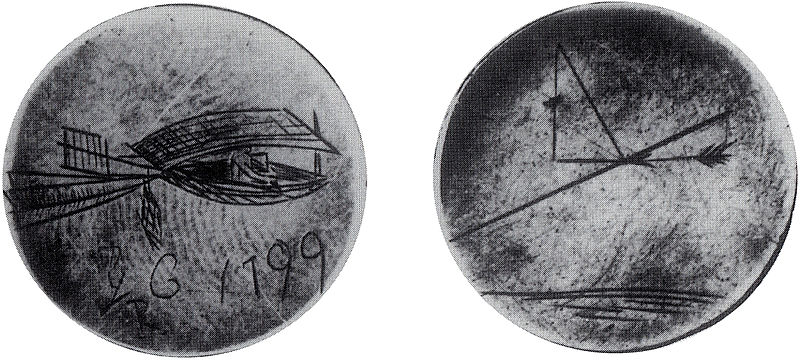Sir George Cayley, the Father of Aviation
Beginnings
23 September 2020

A portrait of George Cayley. Public domain.
By the late 18th century, humans had already figured out how to fly, mainly using balloons. But take a look at our modern perceptions of flight. Fixed-wing aircraft take the lead, and by a far margin. When did we make that switch?
Most people think of the Wright brothers, and they do deserve some credit. But truly, the pioneer of fixed-wing, heavier-than-air flight was Sir George Cayley. Born in Yorkshire, England in 1773, Cayley received a mostly private education via a few academics who tutored him in Math and Physics.
By 1799, Cayley had made a major stride in aeronautics. He engraved a design for a glider on a small silver disc. In his design, he separated the systems for lift and thrust. This choice was revolutionary at a time when everyone was trying to make ornithopters, in which lift and thrust are combined in a single flapping motion. Cayley had already determined that the power of a human would not be enough to power an aircraft enough to fly.

George Cayley's engraving of his glider design on a small silver disc. Public domain.
George Cayley studied like a scientist. He was precise, methodical, and took observations very seriously. In 1809, he published On Aerial Navigation, a three-part series which outlined his work in detail. His style of writing shows the ways in which he thought and reasoned:
Many experiments have been made upon the direct resistance of air, by Mr. Robins, Mr. Rouse, Mr. Edgeworth, Mr. Smeaton, and others. The result of Mr. Smeaton's experiments and observations was, that a surface of a square foot met with a resistance of one pound, when it travelled perpendicularly to itself through air at a velocity of 21 feet per second. I have tried many experiments upon a large scale to ascertain this point. The instrument was similar to that used by Mr. Robins, but the surface used was larger, being an exact square foot, moving round upon an arm about five feet long, and turned by weights over a pulley. The time was measured by a stop watch, and the distance travelled over in each experiment was 600 feet. I shall for the present only give the result of many carefully repeated experiments, which is, that a velocity of 11.538 feet per second generated a resistance of 4 ounces; and that a velocity of 17.16 feet per second gave 8 ounces resistance. (pp. 168-169)
In this passage, Cayley is exploring air resistance. We can tell by his references to other scientists that he had done some prior research into the topic. Based on the results that he read, he then decided to build an apparatus in order for him to test it out himself. Upon running his experiments, he then reports his results in detail.

Drawings of Cayley's glider, published in Mechanics Magazine on September 25, 1852
George Cayley’s various experiments led to several achievements in aviation. These include but are not limited to:
- The "solid of least resistance," an early form of the airfoil
- Small gliders which resemble our modern "free flight" model airplanes
- A deep understanding of stability in flight and the use of elevators
- Eventually, he produced the first manned fixed-wing glider which flew in 1849, called the "governable parachute".
During his time, the engines available to him were too heavy and could not have been feasibly attached to aircraft. That achievement belongs to the Wright brothers, who admit that George Cayley’s work was instrumental to their success:
About 100 years ago an Englishman, Sir George Cayley, carried the science of flying to a point which it had never reached before and which it scarcely reached again during the last century
Interestingly enough, Cayley’s work was almost never published. At the beginning of On Aerial Navigation, he mentions that he heard that a man in Vienna had flown. However, Cayley had not known that the Viennese man used a balloon to fly. Thankfully, he decided to publish his work anyway, proposing that flight could be used for transportation of people and products.
Indeed, his legacy lives on today, as his layout of the propulsion and lift systems can be seen on almost every modern aircraft. As previously mentioned, his work would then inspire the Wright brothers and their monumental achievements in the early 20th century.
References
- Ackroyd, J. A. D. "Sir George Cayley: The Invention of the Aeroplane near Scarborough at the Time of Trafalgar." Journal of Aeronautical History, April 2000. https://www.aerosociety.com/media/4862/sir-george-cayley-the-invention-of-the-aeroplane-near-scarborough-at-the-time-of-trafalgar.pdf.
- Cayley, George. On Aerial Navigation. United Kingdom: William Nicholson, 1810.
- "Cayley Glider." Yorkshire Air Museum. Accessed September 23, 2020. https://yorkshireairmuseum.org/exhibits/pre-world-war-ii-aircraft/cayley-glider/.
- Crouch, Tom D. "Sir George Cayley." Encyclopædia Britannica. Encyclopædia Britannica, inc., December 23, 2019. https://www.britannica.com/biography/Sir-George-Cayley.
- Gibbs-Smith, Charles H. "Sir George Cayley: 'Father of Aerial Navigation' (1773-1857)." Notes and Records of the Royal Society of London 17, no. 1 (1962): 36-56. Accessed September 23, 2020. http://www.jstor.org/stable/531013.